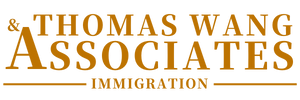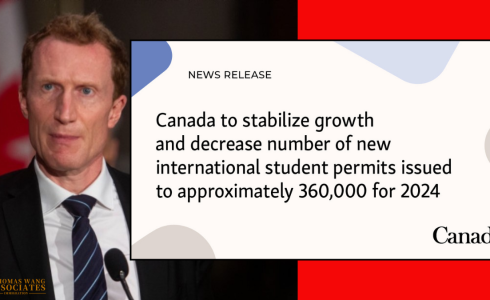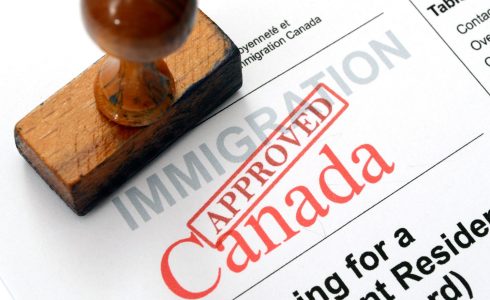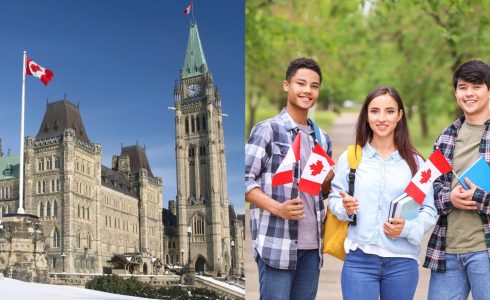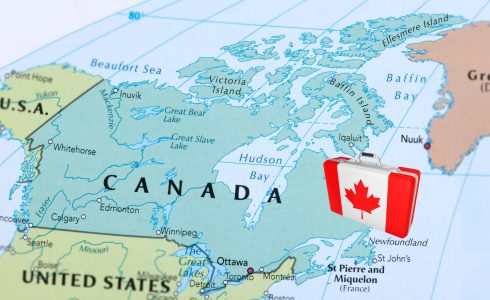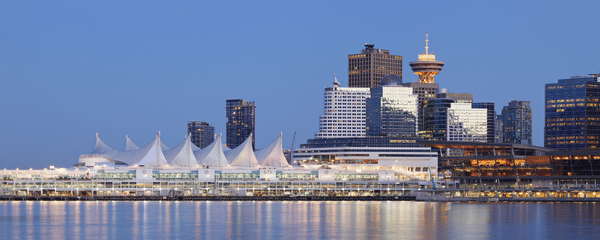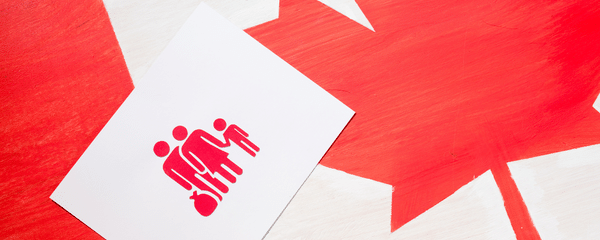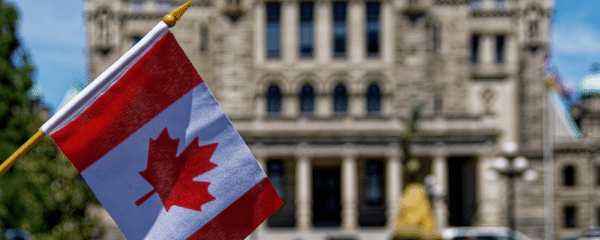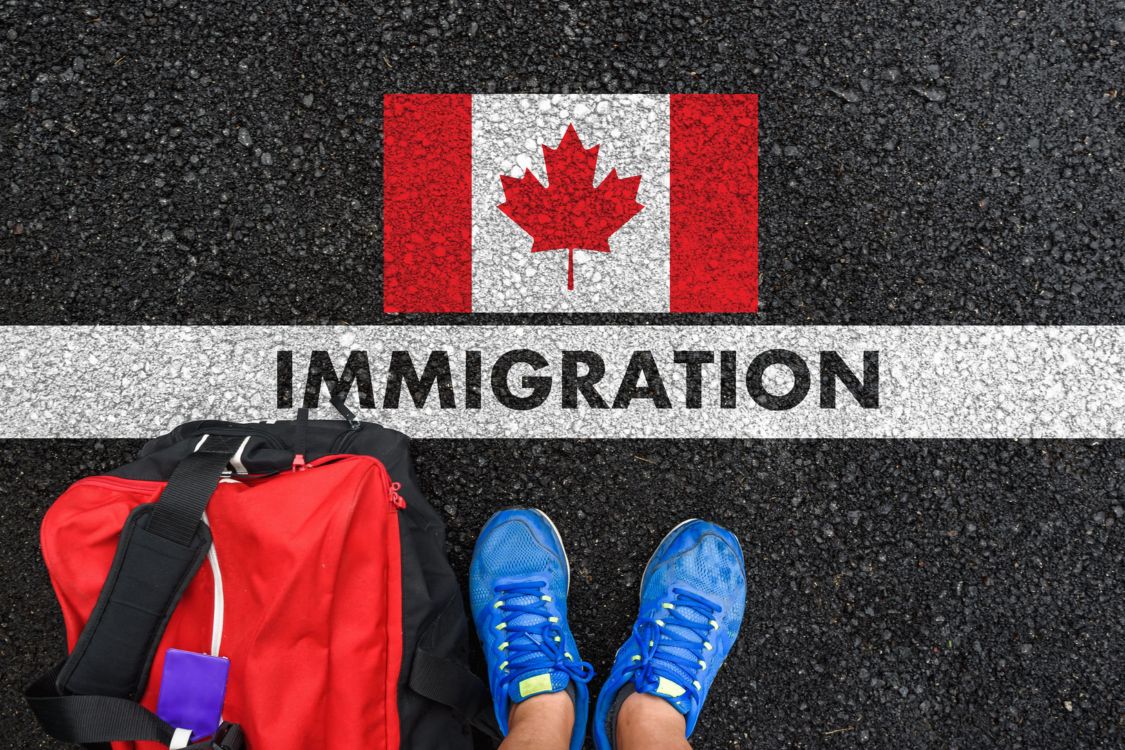
How to Immigrate to Canada 2023? Best PR Options Guide
How to immigrate to Canada? There are many opportunities and pathways for citizens of other countries to immigrate to Canada. The Honourable Sean Fraser, Minister of Immigration, Refugees and Citizenship (IRCC) released Canada’s 2023-2025 Immigration Levels Plan in 2022, aiming to welcome a total of 1.45 million permanent residents.
According to figures released by IRCC in January 2023, the federal government issued Canadian permanent resident cards to 431,645 new immigrants in 2022, far exceeding the record set in 2021. Immigrants now account for 100% of Canada’s workforce growth, approximately 75% of the country’s population growth comes from immigrants, and the government expects immigrants to account for 30% of Canada’s population by 2036.
For Hong Kong people, the Canadian government launched a “Canada Hong Kong Pathway” for Hong Kong residents to immigrate to Canada easier. Apart from the special immigration pathways designed for citizens from different countries, people can also learn more about the federal and provincial immigration streams. For example, international citizens can find out more details about Canada investment immigration programs, Canada skilled immigration, Express Entry (EE), Provincial Nominee Program (PNP), etc. Applicants should evaluate the pros and cons of each program to see which one is the best option for Canadian immigration.
Why does Canada Support Immigrants?
Canada supports immigrants for a variety of reasons.
From an economic perspective, new immigrants contribute to the country’s growth by filling labour market gaps. They bring valuable skills and qualifications to Canada, as well as foster entrepreneurship and investment in Canada.
Embracing diversity and multiculturalism is another key factor. Welcoming new immigrants enriches Canada’s cultural fabric and promotes social cohesion. Furthermore, Canada’s humanitarian commitments drive the acceptance of refugees and displaced individuals.
By supporting immigrants, Canada strengthens global relationships, enhances its reputation, and maintains a diverse and innovative society.
As a large immigrant country, Canada provides different categories of immigration pathways for citizens from all over the world. At the same time, thanks to the country’s friendly immigration policy, immigrants of different races and languages are brought together and new immigrants living in Canada will not be discriminated against.
This article will also explain different things about living in Canada so that people who want to immigrate to Canada, or new immigrants to Canada can know more about the country.
Canada Immigration Requirements
Immigrating to Canada also means obtaining a Canadian Permanent Resident Card (PR Card), which is what we often call a Maple Leaf Card. The Canadian PR Card is the official document for permanent residence in Canada and is valid for 5 years.
- If you have lived in Canada for 2 years out of the last 5 years, you can renew your PR card.
- If you have lived in Canada for 3 years out of the last 5 years, you can choose to become a Canadian citizen.
To obtain a Canadian passport, you must be a Canadian citizen. If you are only a permanent resident of Canada, you cannot get a Canadian passport.
To become a Canadian PR, you can choose the suitable immigration stream introduced by IRCC, prepare the documents and submit the application. Generally speaking, the conditions for immigrating to Canada vary according to each immigration pathway. Detailed application requirements and application conditions will be listed below.
Hong Hong Immigration to Canada: Special Pathway
The “Canada Hong Kong Pathway” is an express immigration program launched by the Canadian government for Hong Kong people. It is a temporary public policy with the lowest threshold in the history of Hong Kong immigration to Canada. The policy allows Hong Kong residents to obtain Canadian PR cards quickly. The Permanent Residence Pathways Program for Hong Kong Residents consists of the following 3 measures:
- Stream A: In-Canada graduates (Canada study immigration)
- Stream B: Canadian work experience (Canada work immigration)
- Open Work Permit (HKOWP)
The policy is valid from June 1, 2021, to August 31, 2026, that is to say, the deadline for Stream A and Stream B applications is August 31, 2026.
Hong Kong people who intend to immigrate to Canada through the Canada Hong Kong Pathway, please note that the above date is the deadline for applying for Canadian permanent residence through Stream A or Stream B. Applicants must have sufficient time to complete the application requirements for Stream A or Stream B. For details, please contact TWA licensed immigration consultants for professional advice.
Stream A: In-Canada Graduates
Stream A is an immigration pathway for Hong Kong residents who are In-Canada graduates. The application requirements are as follows:
- Hold a valid Hong Kong SAR or BNO passport
- You must be in Canada when you apply for and obtain Canadian permanent residence
- Intend to live outside of the province of Quebec
- Obtain CLB Level 5 or above
- Graduated within 3 years before submission of application
- Graduated from a Designated Learning Institution (DLI) in Canada (both public and private)
- 50% of the course must be completed in Canada (online or physical)
- A diploma (minimum 2-year program length)
- A degree (Associate, Bachelor’s, Master’s, Doctoral)
- Graduate/Post-Graduate Diploma/Certificate (minimum 1-year program length)
Our partner DLI-accredited school provides a 2-year diploma program that is eligible for Stream A application. The first year is academic studies. Students can choose to take classes remotely online or in person. The second year is a Co-op experience. Students can practice what they have learned in the real workplace. The co-op can also be completed anywhere in Canada. For details, please contact TWA licensed immigration consultants for professional advice.
Stream B: Canadian Work Experience
Stream B is an immigration program for Hong Kong people with Canadian work experience. The application requirements are as follows:
- Hold a valid Hong Kong SAR or BNO passport
- You must be in Canada when you apply for and obtain Canadian permanent residence
- Intend to live outside of the province of Quebec
- Obtain CLB Level 5 or above
- Hold a valid temporary resident visa
- Graduated within 5 years before submission of application
- Completed at a Designated Learning Institution (DLI) in Canada (both public and private)
- A diploma (minimum 2-year program length)
- A degree (Associate, Bachelor’s, Master’s, Doctoral)
- A graduate or post-graduate diploma or certificate
- Completion of any one of the following educational credentials equivalent overseas
- A diploma (minimum 2-year program length)
- A degree (Associate, Bachelor’s, Master’s, Doctoral)
- A graduate or post-graduate diploma or certificate (minimum 1-year program length)
- Completed at a Designated Learning Institution (DLI) in Canada (both public and private)
- On a valid work visa within the 3 years before submitting the application
- Cumulative of 1 year/12 months full-time: minimum 30 hours per week
- Or equivalent part-time hours: a total of at least 1,560 hours
For details, please contact TWA licensed immigration consultants for professional advice.
Hong Kong OWP
On Feb 6, 2023, the Minister of IRCC announced the extension and expansion of the Open Work Permit for Hong Kong Recent Graduates. The new policy covers Hong Kong residents who have graduated within the past 10 years. Also, the application deadline for this program has been extended to Feb 7, 2025.
The Hong Kong Open Work Permit program allows eligible Hong Kong recent graduates to apply for an open work permit for up to 3 years. OWP holders can work for any employer in Canada during this period without completing the LMIA. Hong Kong people who have obtained 1 year of Canadian work experience can then apply for permanent residence through Stream B. For details, please contact TWA licensed immigration consultants for professional advice.
In addition to the Canada Hong Kong Pathway mentioned above, Hong Kong residents can also obtain Canadian PR through many different immigration streams. The following are some programs open to all people who intend to immigrate to Canada. For most of the immigration programs, applicants will be placed in the selection pool and compete with each other to get the Canada PR. Only those who get the highest scores will be selected and obtain permanent residency.
Canada Skilled Immigration
In terms of Canadian skilled immigration, pathways such as Express Entry ( EE) and Provincial Nominee Program (PNP) are relatively popular. If the applicant’s background and skills meet the requirements of the provincial nominee program in a particular province, it would be better for them to apply for the PNP since it will be less competitive. If you want to know more about the details of each provincial nomination program, you can get more information on the “Canada Provincial Nominee Program” page.
Canada Express Entry has 3 main immigration programs:
Applicants can decide which program is suitable for them to apply for based on their work experience, education, language, age, and additional points. We have also listed some information below to help applicants understand the barriers they will encounter when applying.
Canadian Language Benchmarks
The Canadian Language Benchmarks (CLB) system is used by the IRCC to measure the French or English proficiency of immigration applicants. It is not the language tests like IELTS or CELPIP. Below is an equivalency table of CLB with CELPIP and IELTS scores.
| Canadian English Language Proficiency Index Program (CELPIP) – General Test score equivalency chart | ||||
| CLB Level | Reading | Writing | Listening | Speaking |
| 10 | 10 | 10 | 10 | 10 |
| 9 | 9 | 9 | 9 | 9 |
| 8 | 8 | 8 | 8 | 8 |
| 7 | 7 | 7 | 7 | 7 |
| 6 | 6 | 6 | 6 | 6 |
| 5 | 5 | 5 | 5 | 5 |
| 4 | 4 | 4 | 4 | 4 |
| International English Language Testing System (IELTS) – General Training – Test score equivalency chart | ||||
| CLB Level | Reading | Writing | Listening | Speaking |
| 10 | 8 | 7.5 | 8.5 | 7.5 |
| 9 | 7 | 7 | 8 | 7 |
| 8 | 6.5 | 6.5 | 7.5 | 6.5 |
| 7 | 6 | 6 | 6 | 6 |
| 6 | 5 | 5.5 | 5.5 | 5.5 |
| 5 | 4 | 5 | 5 | 5 |
| 4 | 3.5 | 4 | 4.5 | 4 |
National Occupational Classification
The National Occupational Classification (NOC) is Canada’s national system to identify and categorize all occupations. It is also the only system for IRCC to evaluate immigration applicants’ work experience. Below is the 2021 version of the NOC system.
| TEER | Occupation Types | Examples |
| TEER 0 | Management occupations | Advertising, marketing and public relations managers
Financial managers |
| TEER 1 | Occupations that usually require a university degree | Financial advisors
Software engineers |
| TEER 2 | Occupations that usually require
|
Computer network and web technicians
Medical laboratory technologists |
| TEER 3 | Occupations that usually require
|
Bakers
Dental assistants and dental laboratory assistants |
| TEER 4 | Occupations that usually require
|
Home child care providers
Retail salespersons and visual merchandisers |
| TEER 5 | Occupations that usually need short-term work demonstration and no formal education | Landscaping and grounds maintenance labourers
Delivery service drivers and door-to-door distributors |
Comprehensive Ranking System
The Comprehensive Ranking System (CRS) is a points-based system used by IRCC to evaluate and score the profiles of Express Entry applicants and to rank individual applicants in the Express Entry pool.
The points each applicant can obtain from the CRS include, a maximum of 600 core points, and a maximum of 600 additional points, for a total of 1200 points.
Core points: up to 600 points
- Skill and experience factors
- Spouse or common-law partner factors such as their language skills and educational background
- Skills transferability, including education and work experience
Additional points: up to 600 points
- Canadian degree, diploma or certificate
- Valid job offer letter
- Provincial or territory nomination
- Have a brother or sister who is a citizen or permanent resident of Canada
- Excellent french skills
To be selected from a pool of candidates and invited to apply for Canadian permanent residence, applicants need to have one of the highest scores at the time IRCC sends the invitation.
Canada Investment Immigration
Canadian investment immigration is a popular immigration option for global entrepreneurs. Foreign citizens who intend to immigrate to Canada through investment can check out the investment immigration programs of various provinces or cities.
Currently, the most popular Canadian investment immigration programs include the Start-Up Visa (SUV) launched by the federal government and the investment immigration program launched by the Quebec provincial government.
The application process for investment immigration in Canada is relatively complicated. There are federal and provincial business immigration programs to choose from. We recommend foreign investors who intend to invest in Canada contact our TWA professional licensed immigration consultants for a consultation. It would be a preliminary assessment of the client’s situation and the selection of an appropriate immigration plan.
Start-Up Visa
Start-Up Visa (SUV) attracts entrepreneurs with entrepreneurial and management capabilities to come to Canada to establish a business, and then immigrate to Canada. This immigration program also allows multiple applicants to jointly create a business, so the investment amount for each investor becomes very small.
The current SUV application and approval time is estimated to be 36 months. Regardless of whether the business is successful or not in the future, it will not affect the Canadian PR card that has been applied for or obtained.
Quebec Investment Immigration
Quebec investment immigration is one of the options in the Quebec business immigration program. This is a passive investment immigration project. Its advantage is that each applicant can apply for permanent residence for the whole family.
Different from federal investment projects, participating in Quebec investment immigration does not need to physically start a business in Canada. They can only invest without starting a business. It is easy for applicants to obtain Maple Leaf Cards.
Moreover, this investment is carried out by a financial intermediary designated by the Quebec provincial government and is backed by the provincial government, indicating its safety.
Immigrate to Canada: Life in Canada
After knowing how to immigrate to Canada, the next question will be what is life in Canada like?
First of all, before deciding whether to immigrate to Canada, foreign citizens must first understand the life and culture of this country. Immigration applicants should learn as many different levels as possible, and even join different Canadian immigrants or Canadian life groups, and live in Canada. Ask your friends and family for more information.
First of all, foreign citizens must gain an understanding of the life and culture of Canada before deciding whether to immigrate to Canada. It is important to collect more information about Canada, such as joining different Canadian immigration or Canadian lifestyle groups and seeking information from friends and family members residing in Canada.
We have provided the following aspects for newcomers and foreign citizens who intend to immigrate to Canada to know more when living in Canada.
Canada Immigration: Education
Canada has a comprehensive and world-renowned education system. Canadian residents can enjoy 12 years of free compulsory education. The country has world-leading universities and colleges that provide students with high-quality education and diverse academic programs. Not only that, but the Canadian education system also places great emphasis on cultivating students’ creativity, critical thinking and problem-solving skills. In addition, Canada’s educational environment is very international, attracting students from all over the world to study abroad.
Canada Immigration: Work
Canada provides various employment opportunities for talents from all over the world. The country’s open economic system and diversified industrial structure provide job seekers with various job opportunities. Canada attaches great importance to talents and skills, and there is a great demand for high-quality professionals. Therefore, Canada’s skilled immigration program is very popular. In addition, the country has a very friendly working environment, focuses on work-life balance, and offers many benefits and guarantees to ensure the rights and interests of workers.
Canada Immigration: Healthcare
Canada has a universal healthcare system. The country provides basic health care services to all eligible residents, regardless of income or employment status here. Canada’s healthcare system includes public hospitals, family doctors and other medical professionals, and various health insurance plans. This comprehensive healthcare system enables Canadian residents to receive high-quality healthcare while reducing their healthcare burden.
Canada Immigration: Welfare
Canada’s welfare system is committed to protecting the well-being of residents and social equity. The country offers a variety of social welfare programs including unemployment insurance, old age pensions and disability benefits, among others. In addition, Canada also attaches great importance to child welfare and family support. The government provides family allowances such as childcare allowances and child welfare funds and additional financial assistance and resources for families with children to meet the needs of children.
Canada Immigration: Weather
Canada has a diverse climate due to the country’s vast geographical area. The climatic conditions vary widely from region to region. The coastal areas of British Columbia experience mild winters and cool summers with relatively high levels of precipitation. The coastal regions of Atlantic Canada, including Nova Scotia and Newfoundland, have mild summers and cold winters with moderate precipitation. It is very important for people to understand the local climate and take appropriate measures before coming to Canada.
Canada Immigration: Transportation
Canada has a well-developed transportation system that makes it easy for people to travel both domestically and internationally. The country boasts an extensive road network, making road trips a popular choice. Additionally, major cities have efficient public transportation systems, including subways, trains, buses, and light rails, to facilitate the movement of residents and tourists. Moreover, Canada has numerous international airports that offer convenient flight arrivals and departures, enabling easy access to other countries or return to one’s home country. Trains also provide a comfortable option for long-distance travel across different parts of Canada. Overall, Canada’s transportation system provides convenient and diverse choices for people to travel.
Immigrate to Canada: Conclusion
There are multiple ways to immigrate to Canada. People from all over the world can immigrate to Canada through federal or provincial immigration programs, which allow them to obtain a Canadian Permanent Resident (PR) card, also known as the Maple Leaf Card.
Simultaneously, the Canadian government is actively monitoring the global situation and providing expedited immigration channels for citizens of specific countries. Taking Hong Kong as an example, the Canada Hong Kong Pathway is a special immigration stream designed for residents of Hong Kong. Depending on the applicant’s background, education, work experience, and other factors, Hong Kong residents may be able to acquire Canadian permanent residence within as early as one year. For further information, please reach out to TWA, the licensed immigration consultants for professional advice.
FAQs
How long does it take for Canadian PR to become a citizen?
According to Canadian law, Canadian permanent residents need to have lived in Canada for at least 1,095 days (3 years) within the 5-year period before their application to become a Canadian citizen. In addition to meeting the residency requirement, applicants must fulfill other requirements before they can submit their application for Canadian citizenship.
Can I go to the USA with Canadian PR?
Canadian permanent residents may be required to obtain a non-immigrant visa from the US authorities in order to enter the United States. Before entering the US, it is necessary for Canada PR to hold a valid visa. Additionally, you must have a valid passport issued by your country of citizenship.
Can Canadian permanent residents work in the US?
Canadian permanent residents must hold a valid US visa to enter Canada to work and study. Canadian citizens can work in the United States through a TN visa.
